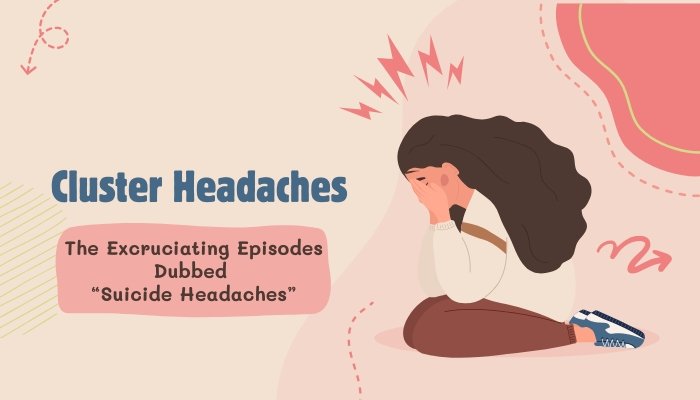Introduction
In an era brimming with smartphones, Wi-Fi routers, and other wireless devices, some individuals claim to experience adverse reactions—such as headaches, fatigue, or tingling—when exposed to electromagnetic fields (EMFs). Called Electromagnetic Hypersensitivity (EHS), this reported sensitivity sparks both scientific debate and emotional tension.
Many official health bodies don’t recognize EHS as a formal medical diagnosis, citing a lack of conclusive evidence. Yet those experiencing these symptoms insist they’re profoundly affected by invisible waves. This article examines the nature of EHS, the controversies around it, and ways patients attempt to manage symptoms in a hyper-connected world.
What Is Electromagnetic Hypersensitivity?
Self-Reported Symptoms
Those who consider themselves electromagnetically hypersensitive describe an array of complaints, ranging from mild discomfort to debilitating pain:
- Headaches or Migraines: Potentially triggered by using mobile phones or being near Wi-Fi.
- Chronic Fatigue: Persistent tiredness or exhaustion that intensifies in certain environments.
- Skin Irritation: Tingling, redness, or burning sensations.
- Dizziness or Nausea: Feelings of imbalance or upset stomach.
Crucially, these are subjective reports—clinical measurements haven’t consistently pinpointed physiological markers that correlate with EMF exposure.
No Unified Medical Definition
While EHS has been referenced worldwide under various terms—“electrosensitivity” or “microwave sickness”—there’s no widely adopted medical consensus. Organizations like the WHO highlight that individuals indeed report these symptoms, but controlled studies usually fail to find a robust link between EMF presence and symptom onset.
The Debate: Science vs. Experience
Lack of Clear Evidence
Randomized, double-blind experiments have typically found that when participants don’t know if EMF is present, their physiological or symptomatic responses don’t align reliably with actual exposure. Critics interpret this as proof EHS is psychosomatic or misattributed, while advocates argue that the tests might not replicate real-world exposure patterns or durations.
Stress and Nocebo Effects
Some scientists propose that EHS stems partly from anxiety or the nocebo effect—where negative expectations about EMFs prompt physical reactions. Worry about radiation hazard might drive psychosomatic symptoms. But EHS supporters counter that labeling symptoms as purely psychological dismisses real suffering.
Emerging Perspectives
While the mainstream consensus leans away from acknowledging EHS as a direct physiological result of EMFs, a minority of researchers call for further nuanced investigations. They argue potential subpopulations might have heightened sensitivity or underlying conditions (e.g., migraines, autoimmune disorders) that worsen near EMF sources.
Living with EHS: Coping and Accommodations
Environmental Modifications
- Low-EMF Zones: Some with EHS reduce or remove Wi-Fi, switch to wired internet, keep mobile phones off except in emergencies, or maintain an “EMF-free” bedroom.
- Shielding Products: Marketed gadgets or fabric claim to block or reduce EMF exposure (e.g., bed canopies, paint additives). Efficacy and cost vary widely, so many rely on trial and error.
Stress Management
Cognitive Behavioral Therapy (CBT) or meditation can ease the stress or anxiety that might compound EHS. Even if the root cause remains debated, these techniques reduce worry and help manage perceived triggers.
Healthcare and Validation
Some with EHS rotate through multiple doctors before finding one that takes their symptoms seriously—whether or not they consider EMFs the cause. A supportive provider can rule out other medical conditions (e.g., chemical sensitivities, thyroid issues, or mental health challenges).
Public Spaces and Policy Responses
Some “Wi-Fi-Free” Zones
A few enclaves or communities have emerged with minimal wireless signals, catering to EHS sufferers. For example, the so-called “radio quiet zones” near radio telescopes inadvertently serve as havens for those wanting minimal EMF.
Limited Official Recognition
Most national and international health agencies don’t classify EHS as an established clinical entity. Some countries, though, allow temporary disability claims or special accommodations if individuals can prove significant functional impairment linked to reported EHS.
Technology Landscape
As 5G and other advanced wireless networks expand, concerns from EHS groups intensify. Yet these concerns rarely alter large-scale rollouts, reinforcing the tension between technological progress and calls for precautionary measures.
Moving Forward with the Controversy
Balancing Technology and Well-being
Regardless of the scientific debate’s end, EHS claimants exist and experience daily distress. With technology continuing to saturate homes, workplaces, and public areas, addressing these individuals’ concerns with empathy, not derision, fosters constructive dialogue.
Integrative Research
Further well-designed, large-scale studies might clarify if certain subgroups exhibit genuine EMF susceptibility. Investigating overlapping conditions, like anxiety or chronic fatigue, might also yield insights. Balanced research—without preconceived dismissals—is key.
Compassionate Communication
Healthcare providers can maintain a respectful stance, acknowledging the reality of symptoms while carefully suggesting potential stress, mental health, or other physical factors. This approach helps build patient trust, ensuring they feel heard.
Conclusion
Whether or not electromagnetic fields directly trigger the physical ailments reported by those with Electromagnetic Hypersensitivity, the fact remains that many experience genuine distress in a world saturated by technology. Public health authorities generally see no conclusive evidence linking low-level EMF exposure to harm, yet it’s vital not to trivialize patients’ suffering. With nuanced research, open-minded medical support, and pragmatic environmental adaptations, those struggling with EHS can find greater clarity and relief. In a rapidly evolving tech landscape, thoughtful consideration of even debatable conditions fosters an inclusive approach, ensuring no one is left without help.
References
- World Health Organization (WHO). Electromagnetic fields and public health.
- Röösli M, Frei P, Mohler E, Hug K. Systematic review on the health effects of exposure to radiofrequency electromagnetic fields from mobile phone base stations. Bull World Health Organ.
- Rubin GJ, Nieto-Hernandez R, Wessely S. Idiopathic environmental intolerance attributed to electromagnetic fields (formerly “electromagnetic hypersensitivity”): an updated systematic review of provocation studies. Bioelectromagnetics.







